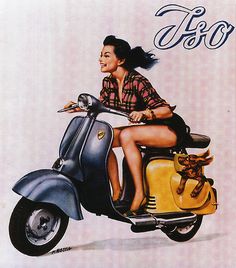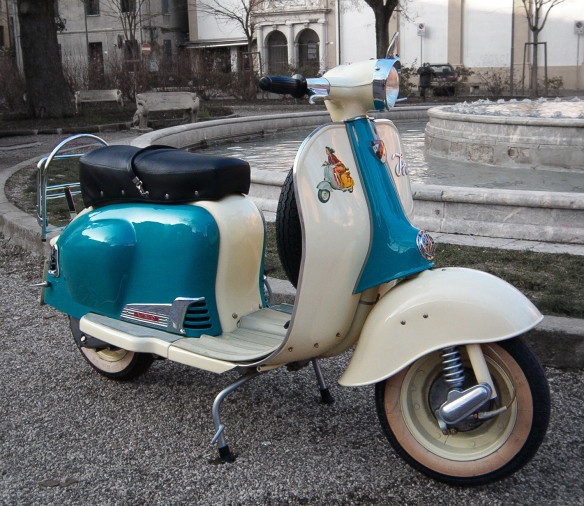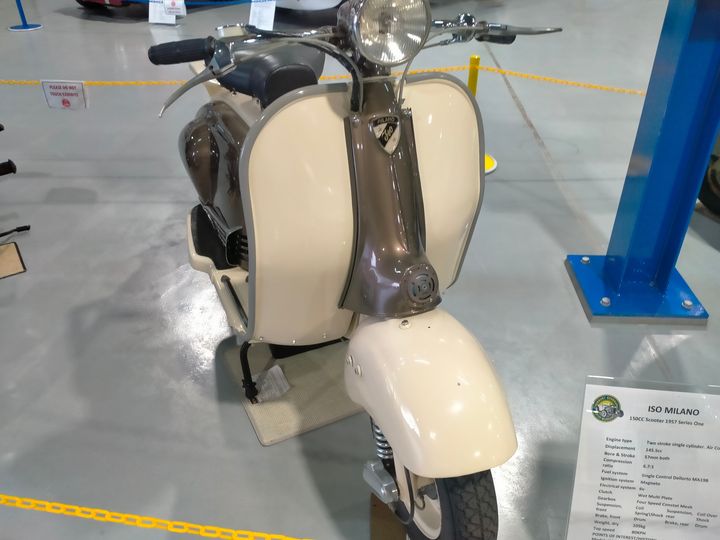 |
Iso Milano The 150cc Italian Motorscooter by Iso Rivolta (1957 - 1963) |
The Iso Milano is a vintage Italian motorscooter manufactured from 1957 to 1963 by Iso Rivolta, headquartered originally in Bresso, Italy. Lesser known today than its contemporary counterparts from Vespa and Lambretta, the scooter was prized in its heyday for its durability and beautiful styling.
Iso began as Isothermos, a producer of refrigeration equipment founded and by engineer Renzo Rivolta. After the end of World War II, the company branched out into making motorcycles and scooters to address the need for affordable transportation in Italy and the rest of the post-war world. Despite once having a sizable presence in the market for two-wheelers, Rivolta had larger ambitions for Iso, and would later leave the motorcycle and scooter market behind to concentrate on the car market full time. Today, the company is best known for the Isetta microcar and a number of stylish sports cars it released in the 60's and early 70's.
Surprisingly, the story of the Iso Milano actually begins in 1957 with Maserati, which, under the direction Adolfo Orsi and designer by Giulio Alfieri, collaborated with Rivolta to create two prototypes for a scooter named the Alférez. The prototypes, known respectively as "M1" and "M2", were shown in Mexico City as part of a proposed venture into the South American market, but never reached production. The M1 was lost, but the M2 survives today, and was last known to be in Texas as the only Maserati-branded scooter ever produced.
While the Alférez was never sold under the Maserati name, Iso began producing them under its own brand in the fall of 1957. With only slight changes (notably to the the openings and internal top rails of the side fairings) and of course new Iso badging, the first production series is otherwise nearly identical to the M2 shown in Mexico City. Sold as the "Iso F" in Italy, it was also known as the "Iso Diva" in Spain, the "Iso Piccolino" in Sweden, the "Iso Scooter 150" in Belgium, the "Iso De Luxe" in Switzerland, the "Iso Milano" in South America and the "Iso Milano De Luxe" in the UK.
The first production series ran from 1957 to 1958, and consisted of 20,000 units. In 1959, an updated model was produced, which extended the headpiece to enclose the handlebars and for the first time added the large "Iso" embellishment to its front shield. Some engine adjustments were made, and the extended two seater seat, which has previously been an option, became standard equipment. Another 20,000 units were produced from 1959 to 1960, and a final 11,000 units were produced in a final production run that ran intermittently until the existing stock of parts was exhausted in 1963. These final versions featured a cast handlebar, white seat, and metal fuel cap.
Today, the Iso Milano is relatively rare in much of the world, but examples can still be found in pockets here and there, including enthusiast communities in the UK, Spain, and especially Argentina, where they were once exported in sizable numbers.






Iso - History (wikipedia)
Iso Motorcycles - A Brief History (Sheldon's EMU)
Iso Scooters, Motorcycles, and Microcars - Historical Notes (Sheldon's EMU)
History of Iso Motorcycles (www.motorcycle-manual.com)
Maserati M2: Iso F prototype - Photos (Sheldon's EMU)
Iso F (1st Series) 1957-1958 - Technical Info (scooterdepoca)
Renovating an Iso Milano classic scooter - Article (blogspot)
Iso Milano (Diva) De Luxe 150 - Article (magzter)
Iso Milano Diva 150cc. 1958 - Article (blogspot)
Piccolino, an Iso scooter - Article (blogspot)
Iso love this - Article (lambrettista)
Isomoto - Fan site (tiscali.it)
Isomoto World - Fan site (isomillennium.it)
|
|